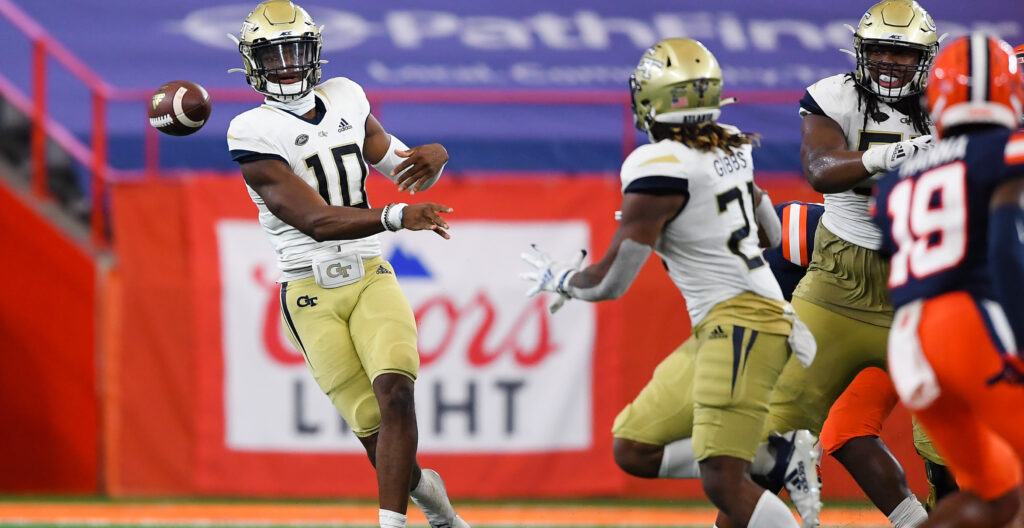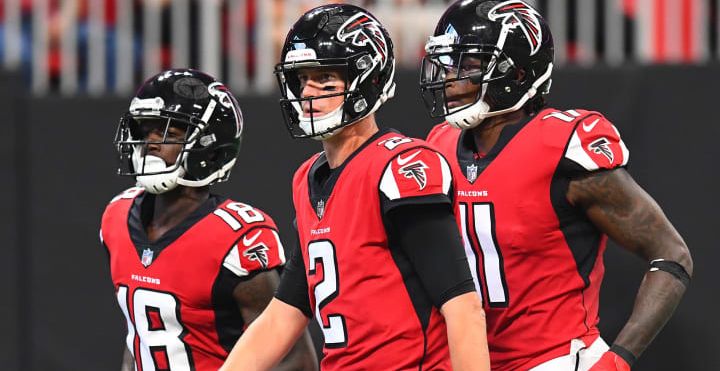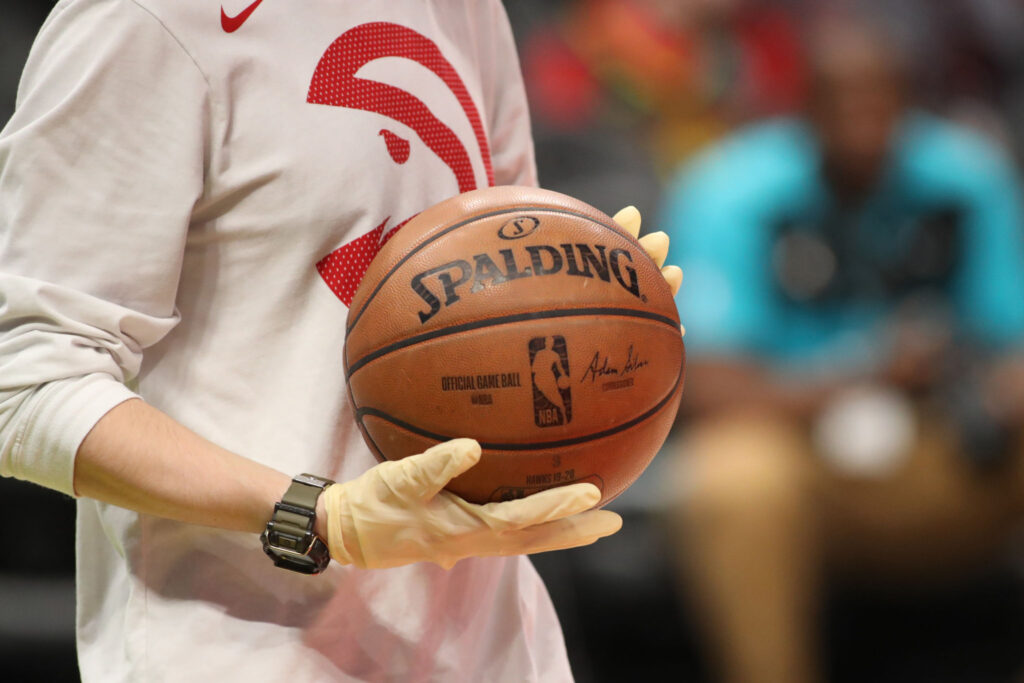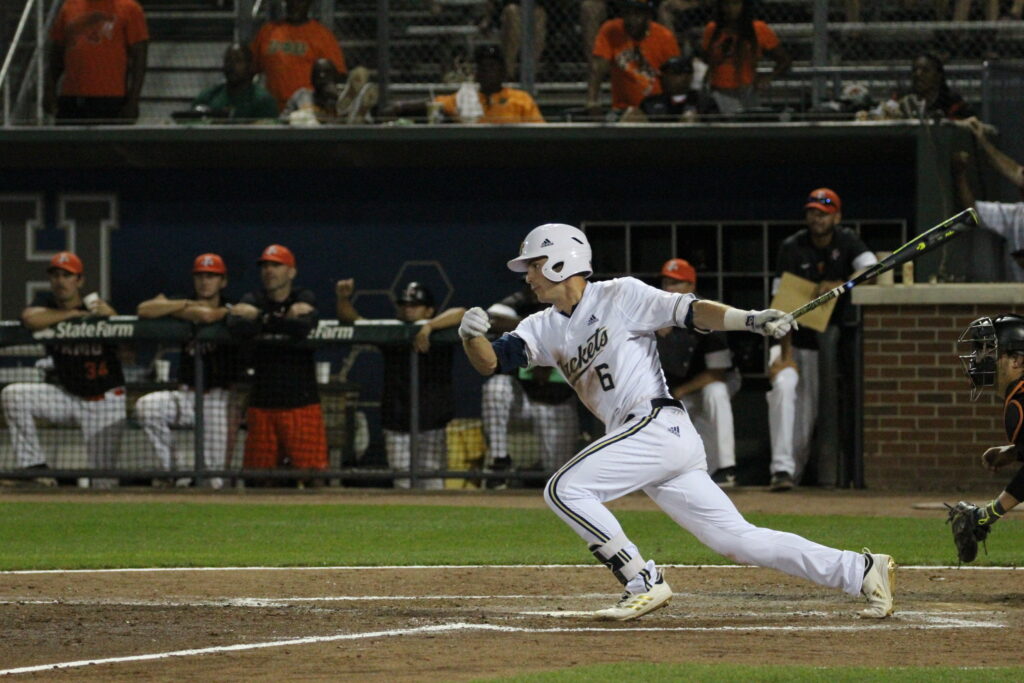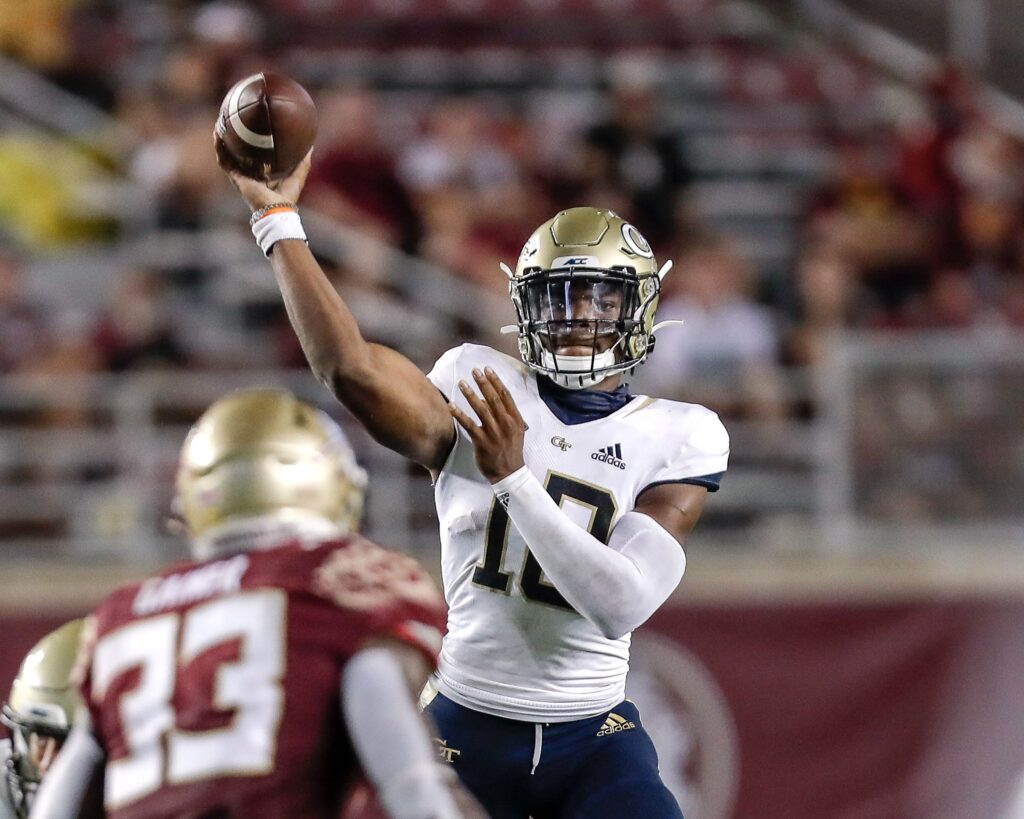
Despite facing a heavily favored opponent on the road and starting a true freshman quarterback, the Jackets emerged from Tallahassee with a season-opening win for second-year coach Geoff Collins against Florida State this past Saturday. The ‘Noles were favored by almost two touchdowns, given a 12.5 point spread in their favor and slightly north of a 75% chance to win at kickoff, but in spite several mistakes throughout the game, mostly on special teams, the Jackets managed to pull out a comeback victory in an inspiring beginning to the season.
Tech received the opening kickoff and displayed their new offensive system immediately, completing two passes for twenty yards on the first two plays. Collins has been working to implement the pass more heavily, so being able to do so early while transitioning from former head coach Paul Johnson’s triple option system is a big step.
The team drove well the rest of their first drive, putting together an eleven play drive to get inside FSU’s 40 yard line. However, pressure by the Seminoles flushed freshman quarterback Jeff Sims from the pocket, and an off-balance throw fell short of the target and into the waiting arms of cornerback Asante Samuel Jr. for Sims’ first mistake of the half.
FSU responded with a 52 yard drive that was capped by a touchdown pass by James Blackman, and with a rain delay following the extra point, Tech had to head to the locker room down 7-0. Both coaches worked to keep their players loose during the delay, but after a punt by Tech and an FSU field goal, the Jackets found themselves in a 10-0 hole early.
Tech’s first great chance to get on the board came just minutes later, when a 74-yard drive had them at the five yard line. The first of a series of special teams woes began here though, as freshman
Jude Kelley’s 22-yard chip shot attempt was blocked by a good rush from FSU’s line. Special teams struggled for the Jackets on Saturday, as the kick coverage units allowed multiple long returns and the placekicking unit was out of sync all afternoon.
Another good drive moved Tech to the red zone before a pressured throw by Sims gave Samuel Jr. his second pick of the game. A long return had Florida State in prime starting field position, but Blackman returned the favor by throwing an interception of his own to junior linebacker Quez Jackson. This set up Tech with great field position of their own at the Seminoles’ 22-yard line. Three plays later, however, Kelley had his second field goal attempt blocked, this one a 38 yard try. After a couple more relatively uneventful drives, halftime came with Florida State leading 10-0
Despite the score not reflecting it, the first half was highly competitive. Tech put up 269 yards, nearly 100 more than the Seminoles, and found success both through the air and on the ground. Despite designed runs struggling early, Sims’ legs helped open up opportunities when other options were scarce. With six points left behind from the field goal blocks and a pair of costly turnovers deep in enemy territory, the Jackets were not out of the game but knew they had to clean up their errors, including the 55 yards worth of penalties that slowed down a number of drives.
The Jackets came out of the second half strong, forcing a punt and followed it up with an 80 yard drive, capped off by a 19 yard touchdown run by redshirt junior Jordan Mason. Kelley hit the extra point, and Tech was on the board in a one-score game.
Florida State drove down for a field goal, but another long Tech drive ended with a nice throw by Jeff Sims that was pulled in by junior Malachi Carter for six points. The Seminoles kept up their special teams dominance with their third blocked field goal of the night, and the Jackets were unable to take the lead, leaving the game tied at 13.
On the ensuing drive, a strip sack by redshirt sophomore Curtis Ryans coupled with a recovery and return by redshirt senior David Curry put the ball on the Seminoles’ 11-yard line, putting Tech in an excellent position to take the lead. After three plays went nowhere, Jude Kelley got his chance for redemption. After having three of his first four kicks blocked, the pressure was on, but the freshman rose to the occasion and made the 32 yard field goal to take the lead, 16-13.
With almost nine minutes left on the clock, more work still had to be done to leave Tallahassee with a victory. FSU began to build a drive, working their way to the Tech 38 yard line before finding themselves in a 4th down situation. Blackman could not find an open receiver and began to scramble, but was hit by Curtis Ryans, who forced his second fumble of the day. This one was also recovered by the Jackets, this time by senior defensive lineman Djimon Brooks. Tech ran a couple minutes off the clock but was forced to punt, giving the Seminoles one last chance to win the game. However, after four straight Florida State pass plays ended up gaining only eight total yards, and the Jackets got the ball back for good by forcing a turnover on downs.
Collins and the team were elated by the win, seen celebrating on the sidelines as Sims knelt to run out the clock. Tech outgained Florida State by 150 yards overall, won the turnover battle, and showed great resolve in persevering through a number of early mistakes.
Tech has a strong first win to build on for the rest of the season. A significant portion of Sims’ mistakes were a result of his youth, and he will only improve as he gains more experience. If the special teams unit can make fewer mistakes and the team as a whole can cut back on penalties, the Jackets will be well-positioned for future success.
Tech hosts the 14th-ranked Central Florida Knights this Saturday at Bobby Dodd Stadium, while FSU heads to Miami for an in-state match-up. Collins’ team will look to build on their week one win against a talented UCF team, and Jeff Sims will hope to continue to perform after a promising debut. Tech received votes in the AP Poll, sitting just outside the top 25 at number 28 for this week, and holds the number 26 spot in the Coaches Poll after Saturday’s win. Kickoff is set for 3:30 at Grant Field.

